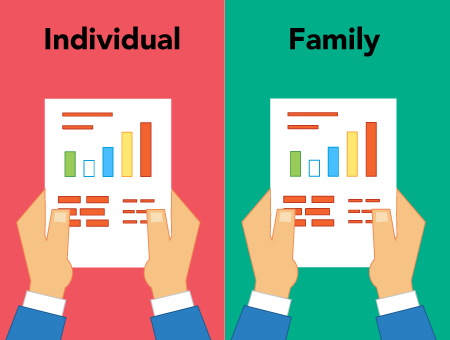Contributing funds to your health savings account is simple and straightforward, regardless of your specific situation—especially if you have a Bend HSA. And when you maximize your HSA contributions, you make the most of the tax advantages that come along with having a health savings account. Because remember—your HSA contributions are tax-deductible up to the annual contribution limit, any payment made out of your HSA for qualified medical expenses is tax-free and any interest you earn on your HSA grows income tax free. For now, let’s focus on the important ins and outs of adding funds to your HSA, beginning with some HSA contribution basics.
Contributing to an HSA as a family vs. contributing to an HSA as an individual

While there are differences between contributing to an HSA with family coverage versus contributing to an HSA with individual coverage, those differences are mostly related to HSA maximum annual contribution limits, along with determining your actual contribution amounts, since the needs of an individual are often very different from the needs of an entire family. You have to consider all of your costs, from the expected to the unanticipated—medical care, recurring costs, including prescriptions, your deductible and any other variables specific to your situation.
Otherwise though, the HSA contribution process itself is nearly identical for HSA family accounts and HSA individual accounts. The most important strategy with HSA contributions is to ensure that your contributions will be enough to cover any anticipated—or unexpected—medical costs for the year, for you alone if you have individual coverage, or for you and your family if you have family coverage.
One of the great things about having a health savings account is having HSA contribution flexibility. And with an HSA, you get flexibility in more ways than one—from the ways you can add funds to your account and who can contribute to your account, to when you can contribute to your account. This flexibility eases the burden of having to calculate an “exact” contribution amount at the start of the year. Bottom line—you can adjust if needed.
First, let’s look at the HSA contribution “how”—the most common ways you can contribute to your HSA.

The simplest way to contribute to your HSA is through payroll deduction, assuming that option is offered by your employer. With payroll deduction, you get the upfront benefit of your contribution coming out of your earnings pretax, lowering your taxable income while “automatically” growing your HSA savings. And while you can adjust your HSA payroll deduction contribution amount at any time, it’s nice to be able to “set it and forget it” until a life event occurs that necessitates rethinking your contribution.
You can also make HSA contributions through electronic transfers. This is where you transfer funds from your checking or savings account through your HSA administrator—like through Bend HSA’s easy-to-use website or mobile app (available at the App Store or on Google Play).
Next, let’s look at the HSA contribution “who”—who can contribute to your HSA.
When it comes to HSA contribution sources, HSAs offer awesome flexibility in that contributions are allowed from you as the accountholder and from your employer, as well as from anyone else who would want to contribute funds to assist with your healthcare expenses—a family member, friend or otherwise. Your HSA has many ways to grow.
Finally, let’s look at the HSA contribution “when”—when you can contribute to your HSA.
When it comes to when you can contribute to your HSA, the answer is quick and simple—as long as you’re covered under an HSA-qualified high-deductible health plan (HDHP), you can make (and change) contributions at any time, as many times as you’d like. That includes anyone else who may be contributing to your account. Just remember, all of the contributions combined can’t exceed the maximum HSA annual contribution limit for your specific situation.
The maximum annual contribution limit for your HSA
When it comes to your HSA contributions, the most important point to remember to avoid potential tax issues is that HSAs have maximum annual contribution limits, set annually by the IRS. Those limits are specific to the type of coverage you have—individual versus family—as well as your age. The HSA contribution limits set by the IRS include ALL contributions made to your health savings account for a given tax year—that means the total sum of all contributions from you, your employer and anyone else can’t exceed the maximum annual limit.
Maximum annual HSA contribution limit for 2020
- $3,550 for individuals
- $7,100 for families
Maximum annual HSA contribution limit for 2021
- $3,600 for individuals
- $7,200 for families
HSA catch-up contribution limit
- For both 2020 and 2021, any HSA accountholder age 55 or older is eligible to utilize a catch-up contribution limit of $1,000 to help grow their account beyond the standard maximum annual HSA contribution limit
Too much contribution to your HSA?

So what happens if you mistakenly over-contribute to your HSA and go beyond the maximum annual HSA contribution limit for your specific situation?
Contributing to your health savings account beyond the IRS annual maximum contribution limit is referred to as an excess contribution. Any excess HSA contributions are subject to income tax—as well as a 6% excise tax—each tax year until the excess contributions are corrected.
Luckily, if you do happen to make an excess HSA contribution, you can avoid the 6% excise tax by withdrawing the excess contribution (and any income earned on it) by the tax filing deadline of the year the excess contribution was made and including the total amount on your tax return. Your HSA provider should have forms to help you correct mistaken or excess contributions, and IRS Form 5329 can help you calculate any tax liability for excess HSA contributions.
Remember, if you educate yourself on your HSA’s maximum annual contribution limit and plan your contributions accordingly, excess contributions shouldn’t be an issue. But if by chance you find yourself in an excess contribution situation, be sure to work with your HSA provider to make sure the excess contributions are removed promptly to avoid tax penalties and IRS fees.
HSA contributions after age 55 – What are HSA catch-up contributions?
If you’re approaching 55 years old, or if you’re already 55 or older, it’s important to understand what HSA catch-up contributions are and what they can mean to growing your HSA savings quicker as you approach retirement.
HSA catch-up contributions are quite simple. The IRS allows for an increase of up to $1,000 annually to the maximum HSA annual contribution limit specific to your situation—individual coverage versus family coverage. Any HSA owner 55 or older, or those who will be turning 55 anytime during that year, are eligible to make HSA catch-up contributions.
Maximum annual HSA contribution limit for 2020
- $3,550 for individuals WITHOUT HSA catch-up contribution
- $4,550 for individuals WITH $1,000 HSA catch-up contribution
- $7,100 for families WITHOUT HSA catch-up contribution
- $8,100 for families WITH $1,000 HSA catch-up contribution
Maximum annual HSA contribution limit for 2021
- $3,600 for individuals WITHOUT HSA catch-up contribution
- $4,600 for individuals WITH $1,000 HSA catch-up contribution
- $7,200 for families WITHOUT HSA catch-up contribution
- $8,200 for families WITH $1,000 HSA catch-up contribution
The idea is that once you hit 55, you’re able to give your HSA savings an extra boost to ensure you have adequate funds for your age and medical care needs now and in the future. And while the extra $1,000 annually might not seem like much, remember that in 10 short years, when you turn 65, all your HSA savings are open to be used for any type of expense—not just qualified medical expenses.
So if you’re turning 55 or are already 55 or older, consider leveraging HSA catch-up contributions to help both your short and long-term financial needs.
© Bend Financial Inc., 2024 | Privacy


 Contact Us
Contact Us